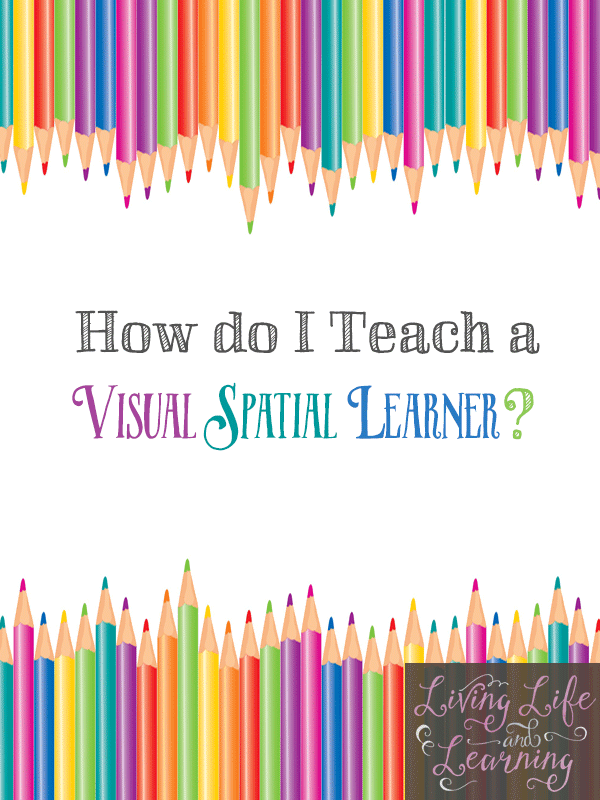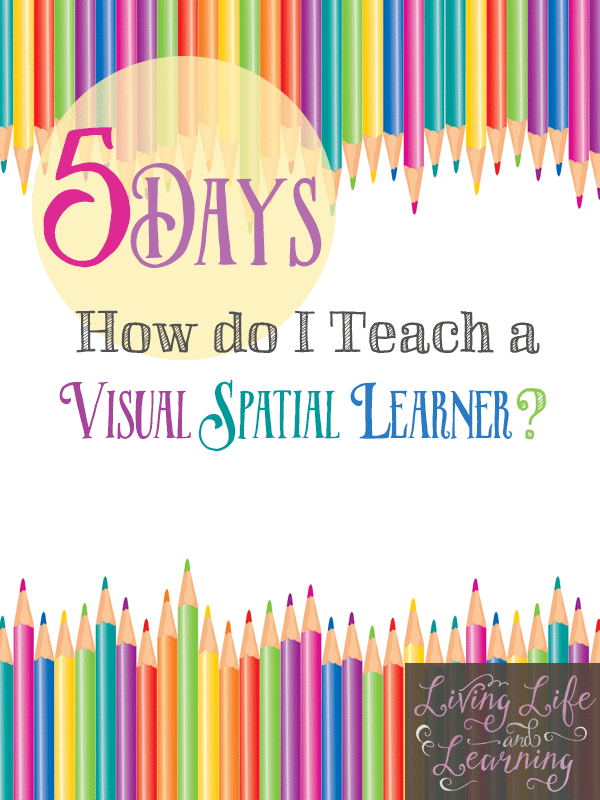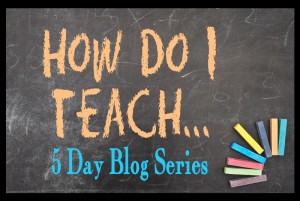How Do I Teach Visual Spatial Learners?
If you haven’t already read my other post do you have a visual spatial learner you may want to take a look first. If you have a visual spatial you know that there are many challenges teaching one you are not visual learner yourself. I am an auditory learner myself, I love reading books even textbooks, and thrived math and science.
When I first started homeschooling my son, I taught him in a school at home way. We did OK but I found that he was having some issues with math. No matter how many times I explained a concept to him, no matter hour many ways I said it. He just didn’t get it. Then I drew a picture and he got it right away. I knew I had to do things differently with him. But I wasn’t sure how. I had to research visual learner and how to teach them.
By chance I ran across an email about visual spatial learners, after reading about them I realized that my son was a complete VSL. He had no knowledge of time, he would also walk into a room and forget what he was looking for, he thought in pictures, and he could easily remember directions to places he’d only been to once. In school he thrived in history and science since there were images he could focus on. He loved reading picture books and often used them to help retell a story. That was in the first grade, he is now in the 7th grade. I cannot believe we have been homeschooling this whole time.  How do I teach my visual spatial learner?
How do I teach my visual spatial learner?


 How do I teach my visual spatial learner?
How do I teach my visual spatial learner?
This post may contain affiliate links meaning I get commissions for purchases made through links in this post. Read my disclosure policy here.
Math
We use a combination of Saxon math, Math Mammoth, and Life of Fred. Saxon is our regular program, we can’t use it as written. I have to go through the lesson and teach it to him on a dry erase board with different colors. he will then go through and do the review questions on his own. I assign all the word problems and every other one of the computation questions. If he’s having double with a concept then we’ll use Math Mammoth. We work on LOF in the summer as review to take a break from our regular program. it’s funny and he loves the story but the pace of the lessons moves to quickly so we use it as a review.Writing
I’ve been making or own writing assignments but I always have M1 make an outline first before he starts his writing. I’ve also introduce graphic organizers which he is just getting use to which I really should have done earlier. Again it’s not how I like to organize my data but it’s something that he benefits from.Reading
M1 reads for an hour a day, he chooses one book to read for 30 minutes and he reads a book that I’ve chosen. He’s not open to trying new things and there’s always a series that he gets into and doesn’t want to stop reading so this is my compromise. We love love love notebooking and lapbooks, this has really got my son writing more. When there’s a purpose – a science or history narration , he is so much more motivated to complete it. Those assignments about how would you describe your room, just aren’t interesting to him, so he lags and drags it on. If it’s on a topic he likes, he can write until his arms fall off. We use notebooking and lapbooks for history and science, we have a visual time line, and lots of diagrams for history. We do our science experiments first and the read and write about what we’ve learned afterwards. VSLs need to do and watch/see first to get the overall picture before they can concentrate on the details. You’ll see more of how I keep my VSL motivated which is another issue we have to deal with. Stay tuned for other great posts about teaching your visual spatial learners. Check out what the other mamas are writing about as well. Read the other post in this 5 day series on How Do I Teach a Visual Spatial Learner?

